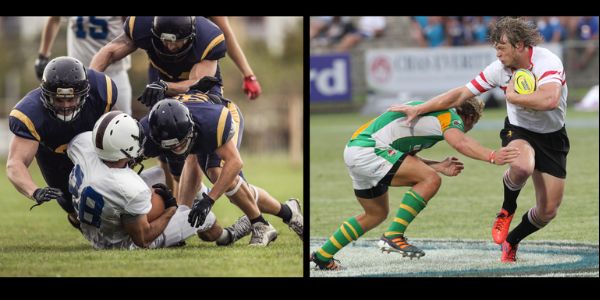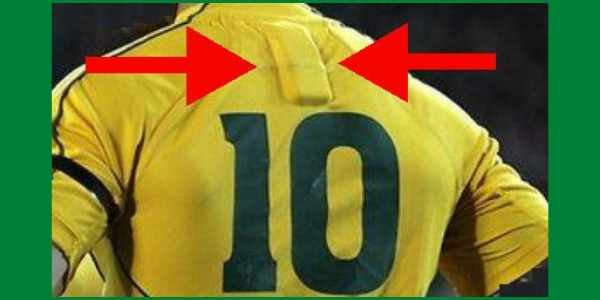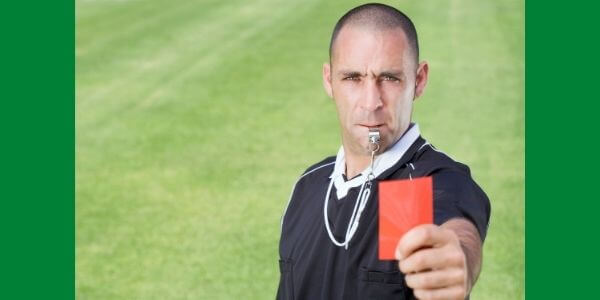It’s been a hot topic over beers for decades: does American football or rugby have the biggest hits and the hardest tackles.
Well, now we have academic studies that measured the force of impact in both sports. Let’s take a look at how that’s done, and what are the answers.
Using G-Force To Measure Hits In Football And Rugby

Let’s explain g-force with examples from normal life to extreme circumstances.
G-force is a measure of acceleration or deceleration relative to Earth’s gravity. The Earth’s pull exerts one g-force on us. Crashing a Formula One car into a wall can exert up to 214 g on the driver.
To get your head around the numbers we’ll show for football and rugby, here are some more metrics for context:
| Sitting in a stationary car | 1 g |
| Sneezing in a stationary car | 2 g |
| Cornering on the racetrack | 5 g |
| Crashing at 65 km/h | 35 g |
| Max Verstappen crash at Silverstone, 2021 | 51 g |
| Robert Kubica crash, Canadian Grand Prix, 2007 | 75 g |
| Kenny Brack crash, Texas Motor Speedway, 2003 | 214 g |
Wait, what happened in the car crashes?
I deliberately picked crashes in which each driver survived. If you’re curious, here is what happened to them:
- Max Verstappen lost consciousness for a brief time. He was taken to hospital but recovered quickly.
- Robert Kubica was also knocked out. He experienced a concussion and an ankle sprain.
- Kenny Brack experienced the largest known horizontal g-force that hasn’t killed someone. He had serious injuries and was out of the sport for a year. But he did start racing again.
How Is G-Force Measured In Football And Rugby?
It’s easy to add sensors to racing cars that measure g-force. But what about footballers and rugby players?
You’ve probably guessed that football helmets hold the sensors in research studies. But rugby players don’t wear football-style helmets.
Some of the earlier studies on rugby gave modified mouthguards to the players. These mouthguards had sensors installed.
More recently, most professional players have sensors held in pouches on the back of their jerseys. You can read more in our article on GPS trackers in rugby shirts.

Study Comparing College Football And Rugby
Another study was conducted on college football and rugby players at Marshall University in West Virginia. Unlike the study in New Zealand, the measurements were taken during practice sessions.
This is a summary of the results:
| Player Group | Average Hits | Average G-Force |
| Football | 274 hits per session | 63 g |
| Rugby | 208 hits per session | 21 g |
As you can see, the collision impact on the football players was literally three times that for the rugby players.
That 21 g average for rugby players is very similar to a study in New Zealand that measured impacts during matches in an amateur league. The study found an average of 22 g, as I describe in a separate article on the impact and force of rugby tackles.
Although the average is lower, that doesn’t mean that there aren’t much bigger hits in a rugby match. One player was concussed after being tackled by three defenders.
These were the numbers:
| Tackle # 1 | from the side (left) | 98 g |
| Tackle # 2 | from the side (right) | 160 g |
| Tackle # 3 | head collides with shoulder | 70 g |
The problem for the ball carrier was that when his body recoiled from the second tackle, his head hit the third defender’s shoulder.
This impact was actually the lowest force. But the impact of the head against bone in a shoulder is how the concussion came about.
Comparing Hits At Elite Level
The studies I’ve reviewed are at amateur or college level. You’re probably thinking that the hits in the NFL and in professional rugby tournaments will be harder.
It’s actually quite difficult to find measurements for this. Professional rugby clubs don’t tend to release the metrics from the GPS trackers they put on their players.
We’ve got two examples in this video.
NFL hit of 87.4 g
The first is a massive hit by a linebacker on a quarterback that was estimated to be 87.4 g.
Bud Dupree of the Pittsburgh Steelers led with his helmet into the chin of Miami Dolphin’s Matt Moore. That would be a red card and a hefty ban in rugby nowadays!
To be fair to the NFL, Dupree was flagged for roughing up the passer.
International rugby hit of 27 g
This Six Nations championship is the elite international tournament in Europe. In 2014, Wales traveled to Ireland to play Ireland.
A young Welsh centre saw his chance to put a big hit on one of the legends of the game. Scott Williams tackled Brian O’Driscoll with an impact of 27 g.
Like Matt Moore, O’Driscoll was on the ground for a while. But he was winded, not concussed because Williams had come in with a fair chest-high tackle.
Unfortunately for Williams, he was the one who had to leave the field with an injury. He had busted his shoulder when it hit O’Driscoll’s elbow.
In a nice touch, the Irishman gave his shirt to the Welshman after the match.
One reason why rugby tackles have less impact than NFL hits

The video illustrates why rugby tackles, even at pro level, should be lower in impact than football. This is because of the rules around “attempting to wrap”.
You can’t lead with your head in rugby (which could be lethal to the tackler). You also can’t tuck your arm and fly in with a leading shoulder.
The tackler will be penalized if the referee decides he didn’t try to get his arms around the body of the ball carrier.
This means that rugby hits are big, but the impact is distributed across the bodies of both players.